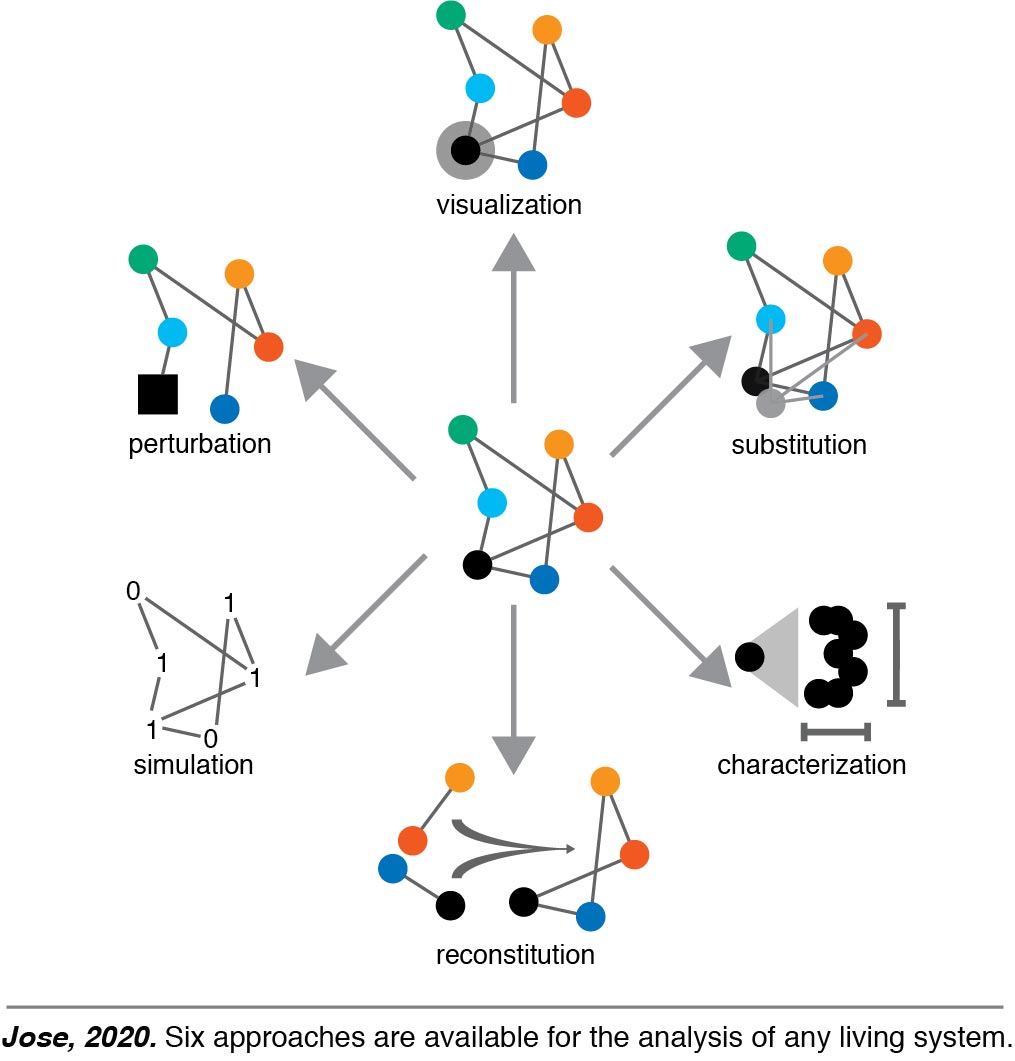Six complementary approaches can be used to understand any living system (Jose, 2020): perturbation, visualization, substitution, characterization, reconstitution, and simulation. We are interested in applying each approach to understand mechanisms that rely on RNA to regulate gene expression across space and time using the nematode C. elegans.

We do not yet understand how organisms perpetuate even the simplest of gene expression patterns - on in some cells and off in all others. To discover how the regulatory information for such a simple expression pattern is encoded and transmitted through the single-cell bottleneck between generations, we are using the nematode Caenorhabditis elegans. C. elegans is an ideal animal model for answering this fundamental question because it has a generation time of just 3 days, a fully defined cell lineage, and well-developed tools for experimental manipulation. In this organism, gene regulatory information becomes unequal after some cell divisions and remains equal after other divisions in a stereotyped manner. Understanding how the information for such orchestration of gene expression patterns is transmitted across generations will inform how organisms evolve, what deleterious regulatory changes can be transmitted across generations to cause inherited diseases, and potentially how dysfunction of such developmental control mechanisms could result in the heterogeneity that characterizes gene expression in diseases such as cancer.
Our progress towards understanding how living systems orchestrate gene expression patterns is organized in three sections:
Transgenerational Regulation. We use phenomena that cause transgenerational gene silencing to discover what promotes and what opposes changes in gene regulation. Our analyses have begun to reveal how regulatory RNA gain access to the germline and how regulatory changes within the germline impact subsequent generations.
Organismal Regulation. We use single-cell resolution measurements to analyze regulatory mechanisms that coordinate gene expression throughout an organism. Our analyses have revealed that developmental mechanisms ensure equal expression from repetitive DNA in sister cells, that similar cells can use different molecules to perform the same function, and that double-stranded RNA made in neurons can cause organism-wide silencing of the matching gene.
Methods. We have developed or improved upon methods for analyzing molecules and processes that are used during transgenerational RNA silencing.
Click on an icon below for more on each section.
If you are curious about the evolution of research programs or simply want more, check out our previous research statements: ~Dec2015, ~Aug2017.
Last updated: Jul 2021
Web Accessibility